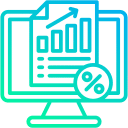As a training manager, you’re constantly striving to measure the effectiveness of your learning programs. But how do you know if your training initiatives are working? The answer lies in robust LMS reporting. With the right LMS reporting examples, you can gain valuable insights into learner progress, engagement, and overall training success.
In this post, we’ll explore the essential LMS reporting examples that every training manager should use to optimize their training programs and ensure they are delivering measurable results.
The Power of LMS Reporting
Learning Management System (LMS) platforms provide invaluable data that can help you assess the effectiveness of your training programs. However, the true value of this data lies in how it is reported and interpreted. By using the right reports, training managers can identify trends, spot areas for improvement, and make data-driven decisions to enhance learning outcomes.
Let’s take a look at some essential LMS reporting examples that will help you track learner engagement, measure performance, and optimize your training programs.
🚀 Ready to See Paradiso LMS in Action?
Let’s show you how Paradiso LMS can work for you.
1. Course Completion Report
The course completion report is one of the most fundamental reports in any LMS. It tracks the progress of learners in various courses and shows whether they are completing the content as expected.
- Why it matters: This report helps you see how many learners are finishing courses. It provides insights into learner engagement and highlights any potential issues with course completion rates.
- What it reveals: If a course has a low completion rate, it might indicate that the content is too challenging, too long, or not engaging enough. This report helps you pinpoint where improvements are needed.
Key Metrics to Track:
- Total completions vs. enrollments
- Completion time
- Drop-off points in the course
2. Learner Engagement Report
Engagement is a key indicator of the effectiveness of your training programs. The learner engagement report tracks the level of active participation in the course content. This could include interactions like time spent on learning materials, participation in discussions, and completing quizzes.
- Why it matters: High engagement typically leads to better retention and learning outcomes. Tracking this data ensures that learners are interacting with the course material in meaningful ways.
- What it reveals: If learners are not engaging with the content, it may suggest that the material is not compelling, or that learners are facing obstacles in navigating the system.
Key Metrics to Track:
- Time spent on each module
- Number of interactions with content (e.g., videos, forums)
- Quiz attempts and scores
3. Assessment and Quiz Performance Report
Tracking learners’ performance on assessments and quizzes is essential for determining how well they have absorbed the material. This report provides insights into quiz scores, common mistakes, and areas where learners are excelling or struggling.
- Why it matters: This report helps you assess whether your learners are grasping the key concepts of the course and helps you identify content areas that may need to be revised.
- What it reveals: Low quiz scores on specific topics might suggest the need for more comprehensive training materials or an adjustment to the delivery method.
Key Metrics to Track:
- Average quiz score
- Question-wise performance
- Time taken to complete quizzes
4. Learner Progress Report
The learner progress report provides a snapshot of each learner’s individual journey through the course. This report shows which modules learners have completed, their overall progress, and areas where they might be falling behind.
- Why it matters: By understanding individual progress, training managers can identify learners who might need additional support or intervention to stay on track.
- What it reveals: If certain learners are consistently behind, it could indicate a need for additional resources or a different training approach to ensure success.
Key Metrics to Track:
- Percentage of course completed
- Number of modules completed vs. pending
- Time spent per learner
5. Training ROI Report
Training ROI (Return on Investment) reports are designed to measure the effectiveness of your training programs in terms of business outcomes. This report helps quantify the value your training programs are bringing to the organization, by linking training performance to business metrics like productivity or sales performance.
- Why it matters: Training is an investment, and you want to ensure that the money spent on learning and development is delivering tangible results for the business. This report shows you whether the training is making a measurable difference.
- What it reveals: This report can reveal how well training is aligned with organizational goals and help justify the budget for future training programs.
Key Metrics to Track:
- Performance improvements post-training
- Impact on productivity, sales, or customer satisfaction
- Cost savings or revenue generated from training efforts
6. Compliance Training Report
For organizations in regulated industries, tracking compliance training is a necessity. The compliance training report helps ensure that all employees are completing the necessary courses to meet regulatory requirements.
- Why it matters: Compliance is a legal requirement for many industries, and failure to comply can result in fines or legal issues. This report ensures that your employees stay up to date on the required training.
- What it reveals: It shows whether all employees have completed the required compliance training, and if not, it highlights those who are at risk of non-compliance.
Key Metrics to Track:
- Completion rates for mandatory compliance courses
- Upcoming or overdue compliance deadlines
- Employee certification status
Conclusion: Unlock the Power of LMS Reporting
Using these essential LMS reporting examples will allow you to track learner progress, optimize training programs, and justify your investment in learning and development. Each report provides unique insights that help training managers make data-driven decisions, improve learner outcomes, and ensure that training aligns with business objectives.
Are you ready to take your training programs to the next level? With the right LMS reports, you can not only measure the success of your training initiatives but also continuously improve them.












